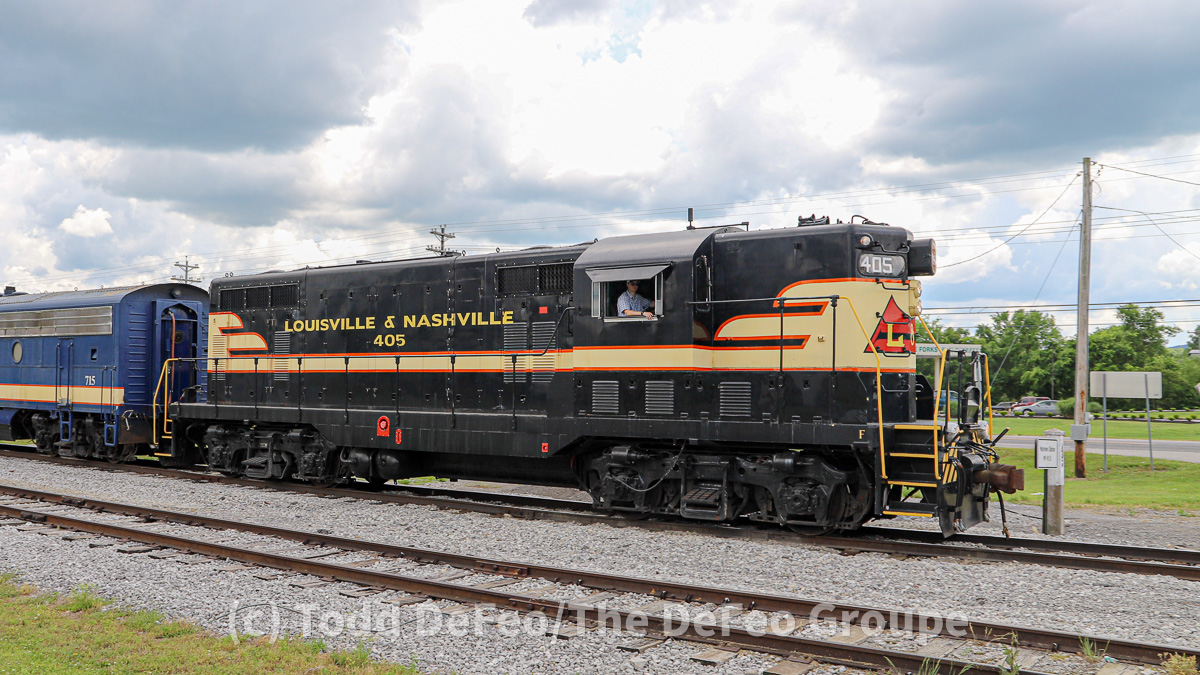The Tennessee state legislature chartered the Edgefield & Kentucky Railroad on Feb. 13, 1852, to build a line between Edgefield Junction near Nashville, Tennessee, and the Tennessee-Kentucky state line (Guthrie, Kentucky). The railroad completed its line toward the end of 1859. It consolidated with the Evansville, Henderson & Nashville Railroad, chartered in 1867, in 1871. In 1879, the Louisville & Nashville Railroad purchased the Evansville, Henderson & Nashville.
The genesis for the Indiana, Alabama & Texas Railroad dates to the late 1860s and 1870s. The railroad formally emerged after merging three lines: the Mobile, Clarksville & Evansville Railroad, the Princeton & Ohio River Railroad and another company named the Indiana, Alabama & Texas Railroad. The railroad was unable to raise the capital needed to build much of a railroad and completed only about 30 miles of narrow gauge line between Clarksville, Tennessee, and Gracey, Kentucky, by 1886, when the Louisville & Nashville purchased the line. The Louisville & Nashville subsequently broadened the railroad to standard gauge and abandoned the route in May 1933.
The Lexington & Ohio Railroad was the first railroad in Kentucky, and its charter proposed establishing a link between Lexington and Louisville at the Falls of the Ohio by way of Frankfort. The line's first rails were laid by October 1831, and two miles were in operation by August 1832; the railroad initially used horse-drawn trains. The line to Frankfort was completed by January 1834. While work on the line from Frankfort to Louisville began in 1835, the entire line was never completed, and it collapsed in the wake of the Panic of 1837, and the commonwealth acquired operations and then leased the line. The Lexington & Frankfort Railroad acquired the Lexington & Ohio on February 29, 1848, and subsequently merged with the Louisville & Frankfort Railroads to form the Louisville, Cincinnati and Lexington Railroad.
The Louisville & Nashville Railroad (L&N) was incorporated in 1850 and built a rail line between Louisville, Kentucky and Nashville, Tennessee. Over time, it built or purchased various branches. In 1902, financier J.P. Morgan delivered control of the Louisville & Nashville to its rival, the Atlantic Coast Line Railroad. However, the Louisville & Nashville continued to operate independently. In 1971, the Atlantic Coast Line Railroad's successor, the Seaboard Coast Line Railroad, purchased the remainder of the Louisville & Nashville shares it did not own, making the company a subsidiary. By 1982, the Seaboard Coast Line absorbed the Louisville & Nashville Railroad. In 1986, the Seaboard System merged with the Chesapeake and Ohio Railway and the Baltimore & Ohio Railroad to form the Chessie System. The combined company became CSX Transportation.
The Nashville, Chattanooga & St. Louis Railway began as the Nashville & Chattanooga Railroad, chartered in Nashville, Tennessee, on December 11, 1845. Built to five-foot gauge, the Nashville, Chattanooga & St. Louis was the first railway to operate in Tennessee. In 1880, the Louisville & Nashville Railroad took a controlling interest through a hostile stock takeover. The railroads operated separately until merging in 1957.
The Norfolk and Western Railway was a United States Class I railroad headquartered in Roanoke, Virginia, and established through over 200 mergers between 1838 and 1982.
For most of its history, its motto was "Precision Transportation," and it was known by several nicknames, such as "King Coal" and "British Railway of America." In 1986, the N&W merged with the Southern Railway to form what is now the Norfolk Southern Railway.
The N&W gained recognition for manufacturing its own steam locomotives and hopper cars at the Roanoke Shops. After 1960, it was the last major Class I railroad to operate steam locomotives, with the final Y class 2-8-8-2s retired in 1961.
In December 1959, the N&W merged with the Virginian Railway, a longstanding competitor in the Pocahontas coal region. By 1970, additional mergers with the Nickel Plate Road and Wabash created a network operating 7,595 miles of road and 14,881 miles of track, spanning from North Carolina to New York and from Virginia to Iowa.
In 1980, the N&W combined its business operations with those of the Southern Railway, another profitable carrier, to establish the Norfolk Southern Corporation as a holding company. Both the N&W and Southern Railway continued to function as separate railroads under this unified corporate structure.
In 1982, the Southern Railway was renamed Norfolk Southern Railway, and the holding company transferred control of the N&W to this newly renamed entity.
The Paducah, Tennessee & Alabama was created following a July 1889 consolidation of several earlier companies. However, by the end of October 1893, a federal judge appointed a receiver for the road following a lawsuit filed by creditors in St. Louis. The move made it a prime candidate for a takeover. In October 1895, J.W. Phillips of St. Louis purchased the company for $1 million. He also secured the Tennessee Midland with the intent of merging the lines into a single company. It was soon revealed the Louisville & Nashville was behind the acquisition. The owner resold the companies to the Louisville & Nashville on December 14, 1895.

